Can’t go? Do these yoga poses for quick relief, gut expert says
If you’re releasing flatulence during yoga class, you’re not alone.
The exercise is full of movements and postures that engage your digestive tract.
There are three main ways a yoga session can get slow digestion moving, says Dr. Jill Deutsch, director of the Yale Functional Gastrointestinal Disorders Program.
Dr. Deutsch, who is also a registered yoga teacher, said regular practice can help stimulate the digestive organs, strengthen the muscles that help you exercise and initiate relaxation.
Stress can contribute to constipation, and the movement and breathing exercises associated with yoga can help relieve some of this – and strengthen the muscles needed to help stool leave the body.
‘Even a short sequence can be helpful on most days, compared to a very long one [yoga] flow only once a week,” says Dr. Deutsch told SELF.
Because your digestive organs are packed tightly around your abdomen, movements that twist and flex this area can stimulate activity in the area.
Experts say the gentle pressure or compression of your stomach and colon can move gas or stool along the intestinal tract.
“The gastrointestinal tract moves from the right lower abdomen up and around to the left lower abdomen in a circle, so it makes sense that a twisting or circular motion could potentially help stimulate or improve movement through the gastrointestinal tract,” said Dr. Deutsch.
Then there are the poses that strengthen the pelvic floor muscles. This group of muscles sits between the genitals and the anus and is important in controlling the flow of waste leaving the body, according to the continence foundation of australia.
Weakened pelvic floor muscles – due to birth, injury or disuse – can lead to unstable bowel movements.
Additionally, conscious breathing exercises common to yoga can regulate the movement of the diaphragm, reducing abdominal pain, urgency and bloating, according to the University of Michigan’s Department of Digestive and Liver Health.
Plus, deep breathing relaxes your body – and the more relaxed your body is, the easier it is for you to go.
The gut and the brain are deeply connected, and if you can reduce anxiety and stress, you’ll likely be more lubricated there, Kelly Turner, a yoga teacher and vice president of training and experience at YogaSix, told SELF.
‘Yoga helps people return to a state of relaxation and ease, which often leads to positive changes in digestion,’ Ms Turner said.
Here are eight poses that can help you get things moving.
Cat-cow
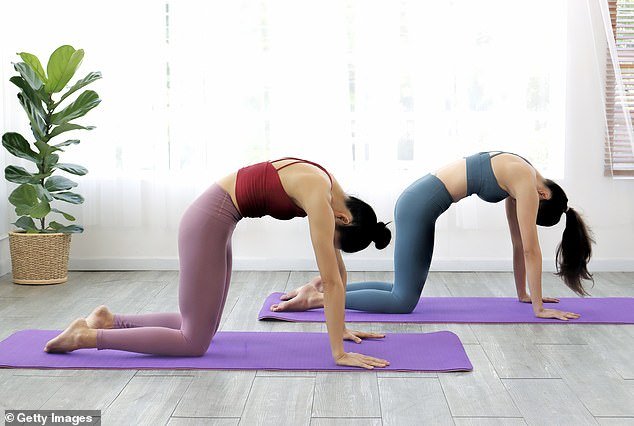
The cat-cow pose involves moving from an arched spine to an arched spine as you breathe, and extends across an entire part of your body, from your pelvis to your shoulders.
This pose, originally known in Sanskrit as Marjaryasana-Bitilasana, has you move from an arched back to an arched spine while sitting on all fours. It is often used early in class as a way to prepare the spine for movement.
The pelvic movement in these poses is key to their digestive benefits, Valerie Lucas, a senior master trainer at YogaSix, told SELF. “This is useful when you need to relieve gas pain and stimulate digestion,” Ms Lucas said.
Moving through these convex and concave positions moves blood to your back and abdomen, which can help improve intestinal flow. Katey Davidson, a registered dietitian and personal trainer, wrote for Healthline.
Lying twist
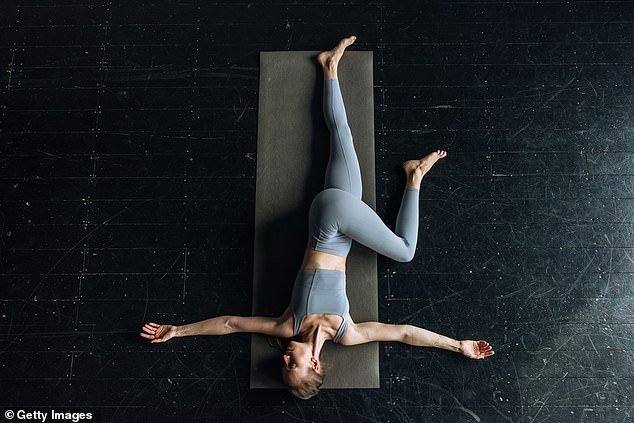
This position is known in Sanskrit as Supta Matsyendrasana. To get the most out of the benefits, keep your upper body stable while moving your lower body.
To get into this twisted position, lie on the floor, press your knees to your chest, and lower both to one side of your body while keeping your upper back still, with your arms extended out to the sides.
After sitting in this position for at least 20 seconds, pick up your legs and extend them to the opposite side of your body to get the stretch on both sides.
Dr. Deutsch said poses that involve twisting may be the best for stimulating digestion. That’s because twisting puts pressure on the digestive organs, pushing and prodding the complex pipes that move waste.
Squat
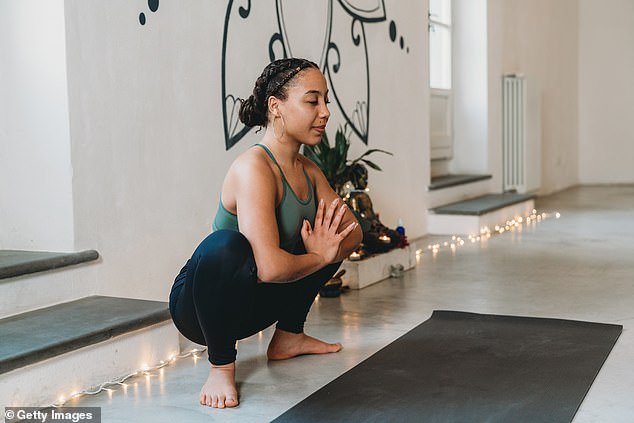
This squatting position can tighten your pelvic floor muscles, which are important in helping you go to the toilet. This pose is known as Malasana in Sanskirt.
Malasana, commonly known as a squat, has yogis place their feet wider than their shoulders, bend their knees and drop their pelvis to the floor while using their elbows to press your knees open.
In this position, you get a deep leg, groin, and ankle stretch while tightening your pelvic floor, wrote Natalie Trubin, a physical therapist. The healthy onea reader’s digestion shoots away.
“It’s a great pose for both lengthening and strengthening the pelvic floor,” Ms. Trubin said.
Seated twist
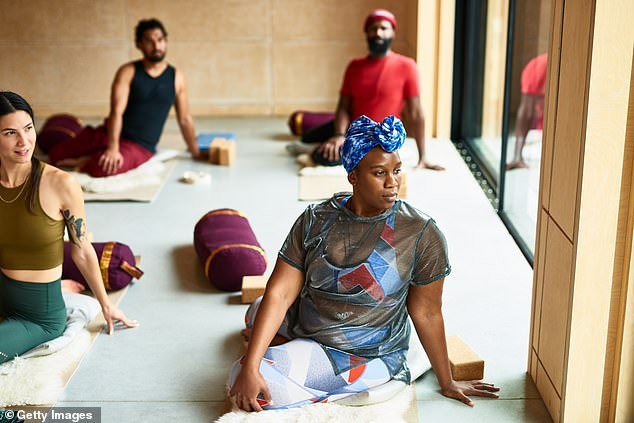
By sitting cross-legged and rotating your upper body, you can massage your inner organs.
Sit on the mat with your legs crossed and make sure your spine is neutral. Then place your hands on the outside of your thigh, rotate your spine to the side and look in the direction you are turning, holding for at least 30 seconds.
This pose stretches the lower back and falls under the Dr. category. Deutsch twist, making it a bowel stimulator.
Ayurvedic medicine, the traditional holistic medicine system native to India, seems to view these types of postures as ways to “improve overall gut health, function and motility,” she said.
Half lord of the fishes pose
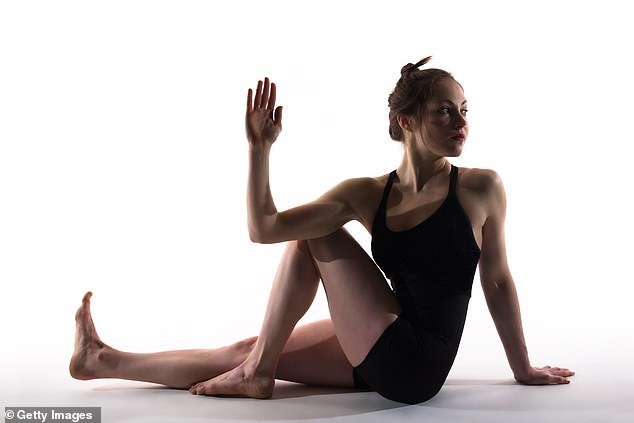
This pose, Ardha Matsyendrasana, uses the tension between your arm and leg to create a twisting motion in your back.
To enter this post, extend your legs in front of you while sitting on the floor, and then bend one leg toward your opposite knee. From there, take the other arm and place your elbow on the outside of your bent knee, using the other arm as support to rotate yourself backward.
In this position you can hold your right thigh for support, which should be held for at least thirty seconds.
This pose also falls under the twist category. Ms. Lucas emphasized that it is a particularly good massage for the abdomen, which could release tension from your core and gastrointestinal tract.
Knees to the chest
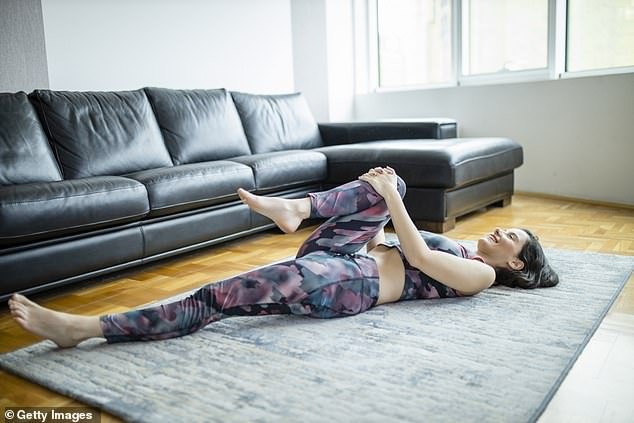
This post is also called the wind-relieving pose. It can be done as shown here, with one leg, or by bringing both knees into your chest at the same time.
This pose, known in Sanskrit as Apanasana, is also called the “wind-relieving post” because it is so efficient at removing gas from your system. WHY
This can be done with one leg at a time or with both legs in the chest at the same time. To achieve this, first lie flat on your back with your legs extended. Then pull one or more legs into your chest and hold them firmly with your hands.
You can hold still or gently rock the leg back, making a more circular motion on your lower back.
This position gently compresses the stomach and colon, allowing air to be pushed out, like a whoopie cushion.
‘This yoga pose is excellent for people who suffer from gas, bloating and abdominal pain. It provides relief by gently massaging the abdomen from front to back,” says the Colorectal Clinic of Tampa Bay.
Child’s pose
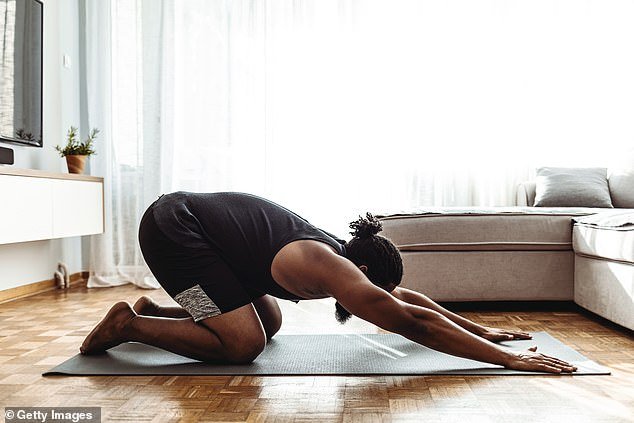
Child’s pose is a well-known part of yoga and can help you get your poop moving.
The child’s pose, known in Sanskrit as Balasana, starts on your knees. From there, you can extend your hands above your head as you fold your torso over your legs, stretching your shoulders, neck, and spine before resting your forehead on the floor.
This pose is especially good for helping your body relax. A more relaxed body is a body that poops faster.
“Child’s pose helps change the angle of the pelvic floor muscles to reduce tension in the low back,” said Dr. Deutsch.
Happy baby
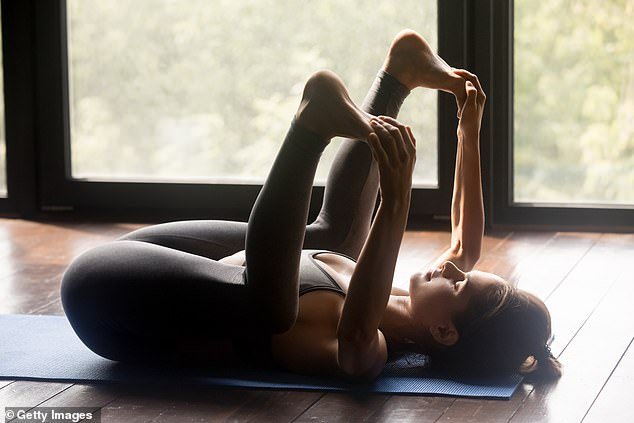
This pose can help tighten and lengthen the pelvic floor muscles while also getting some internal movement of your gastrointestinal organs.
To get into the happy baby position, lie on your back and lift your feet off the floor in a flexed position.
Then, grab the part of your feet that is comfortable and pull them slightly towards your chest, making sure that your knees remain on either side of your body.
This exercise can give you an internal massage while also taxing your pelvic floor, Ms. Trubin said.
Because you lie on your back in this position, you don’t have to work against gravity, which makes it easier for your muscles to relax.
“This gives those muscles a chance not only to lengthen, but also to relax and release,” Ms. Trubin said.
Ms. Lucas recommends this to relieve gas and bloating pain.
